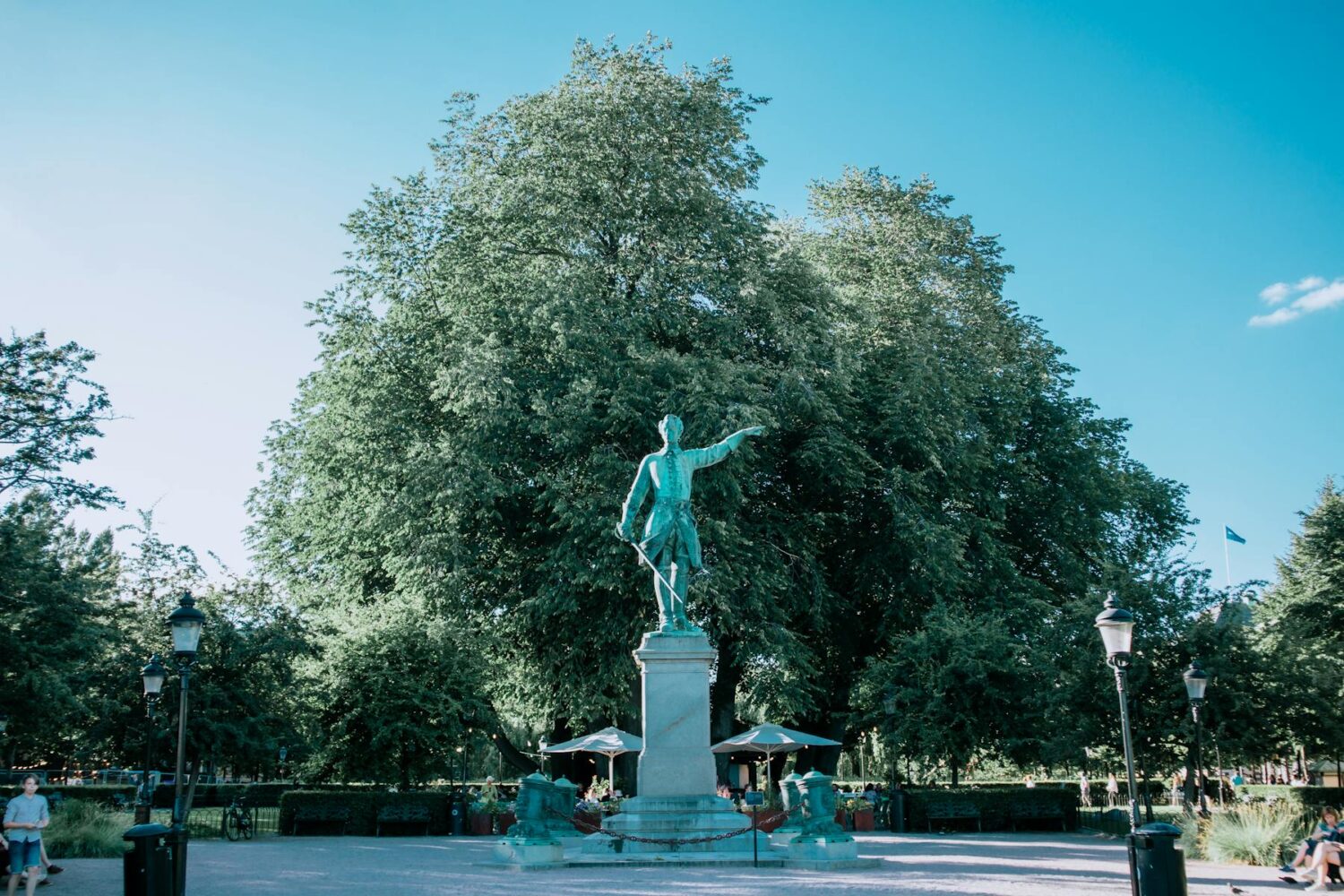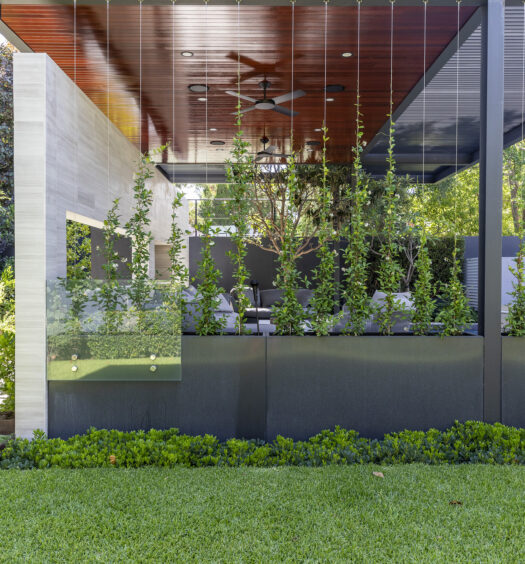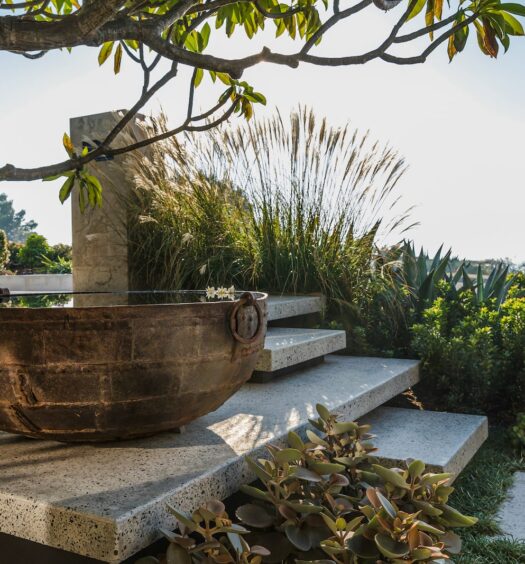Some of the most valuable examples of art are not those that are locked in galleries and exhibitions. The architecture of our homes, the buildings we work in, and the features of our cities make up part of the fabric of daily life. When we mindfully crank up the artistic elements of these features, there’s a more holistic benefit. So, let’s take a look at some interesting and enriching approaches to this combination.
Integrating Aesthetics and Functionality
Integrating aesthetics with functionality is one of the most important points of intersection between landscape design and fine art. Certainly, being around beautiful objects can boost residents’ and visitors’ quality of life. Indeed, living with aesthetically pleasing items may improve day-to-day mental wellness among populations. At the same time, true integration that makes a difference requires art to be a meaningful part of everyday actions.
This is certainly an intricate balance to achieve. When pursuing personal projects or spearheading public art initiatives, it’s vital to look at not just how features could make people feel, but also how those can make a practical difference in their lives. Some of the public and private projects that have done this well include:
The High Line in New York City
The High Line is a prime example of the reuse of obsolete urban spaces. This park features a disused railway track that was repurposed into a city park, rather than being destroyed or left to decay. Alongside the artistic aspects of blending urban features and a green oasis, the High Line also serves a purpose as a natural ecosystem in the heart of the city. The choices of plants provide habitats for local wildlife and pollinators. Not to mention that its walking paths, seating areas, and performance spaces support the well-being of residents and visitors.
LEED Platinum University of Arizona Environment + Natural Resources II in Tucson, Arizona
This portion of the University of Arizona’s campus is dedicated to being both a visually stimulating piece of landscape art while being a functional environmental laboratory. Aesthetically, the courtyard and architectural elements seek to represent many of the natural landscape characteristics of Arizona.
The shapes and positioning of the buildings evoke the forms of mesas and canyons while throwing dramatic shadow and light contrasts. Importantly, the design also actively and passively supports studies into sustainability that are the focus of the faculty, alongside offering a venue for students to socially gather.
Incorporating Sustainability into Artistic Landscapes
The art world is increasingly recognizing that while fine art as part of the landscape is enriching, it shouldn’t be to the detriment of the local ecosystem or the wider environment. This is evident in the various ways that sustainability trends are influencing art. For instance, the materials used for public art now are more likely to be natural, recycled, or more resilient. There’s also a greater tendency to showcase nature, such as by using shapes inspired by natural features or highlighting how beautiful yet vulnerable our environment is.
When designing apartment complexes, parks, neighborhoods, or public art, utilizing this approach can have a powerful impact. Some of the sustainable elements worth considering include:
- Water management in water features: Water features in both urban and residential spaces add an artistic flare. However, you can increase the impact of these by both using and showcasing water management practices in the design. This could include visible rainwater harvesting. A good example of this is Binford Middle School in Virginia, which has adopted a sculpture that features permeable surfaces that both manage stormwater runoff and directly irrigates gardens.
- Utilizing native plants: Native plants are not just a feature of artistic landscapes but also serve a vital sustainability purpose. They are food for local pollinating insects while also enriching the soil and boosting the regional ecosystem. By incorporating this plant life into the landscape or within public art, you can honor your ecological heritage while supporting the ongoing biodiversity of the area.
When incorporating these sustainable elements, it’s also important to consider the balance of the passive and active. Passive features, like using recycled materials, are great elements to include in buildings and sculptures. However, you can complement these with items that actively make the features more sustainable — like aforementioned rainwater harvesting or even wind power turbines — to extend the value of the fine art.
The Impact of Innovations
The intersection of landscape and fine art can also benefit from technological and design advances. By being open to exploring the potential of both current and long-standing innovations, there are opportunities to enhance the sustainability of these projects.
Some of the most prevalent examples of this are the global innovations that improve resilience to climate change. For instance, in Germany, developers are minimizing the detrimental impact of heat islands with green roofs. This involves planting grass, shrubs, and flowers on roofs to absorb heat, which cuts down on air conditioning use while boosting the aesthetic of the space.
Passive solar design, which has ancient Greek and Chinese roots, is boosted by contemporary technology to maximize sunlight through optimized panes of glass and trap heat in thermal mass walls. This energy is then stored or released as needed. Passive solar prioritizes natural energy efficiency, while also leaning into architectural design features that leverage natural light and open plan spaces.
A great example of how sustainable innovations are enhancing landscapes is the living walls and roof gardens in and around the Adelaide Zoo complex. As a piece of landscape art, this project embraces the beauty of native grasses and fringing plants to add a dynamic and diverse natural canvas that winds its way over and around formerly dull concrete structures. At the same time, it’s an innovative approach to passive water collection that both provides natural irrigation to the zoo and mitigates urban heat islands.
Conclusion
The intersection of landscape design and fine art can present enriching additions to everyday life. There are also ways to boost the positivity of these areas, with sustainable design choices and innovations. In public spaces, though, it’s wise to include community members in improvements. By seeking their ideas and understanding what’s meaningful to them, the socio-cultural benefits can be even more profound.





November 11, 2024
Wow, I love how this article shows landscape as real-life art! It’s amazing to think we can make our spaces both beautiful and eco-friendly. Seeing examples like green roofs and native plants inspires me to make nature a part of my own yard!